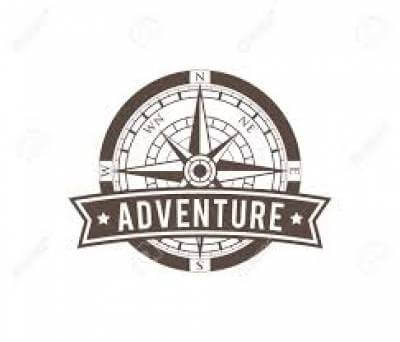Everest Base Camp Trek 12 Days
The Everest Base Camp Trek 12 Days is a high-altitude adventure through the heart of the Himalayas — a once-in-a-lifetime journey that retraces the legendary steps of Sir Edmund Hillary and Tenzing Norgay. In 1953, these pioneers reached the summit of Mount Everest (8,848.86m), but it all began at the iconic Everest Base Camp (5,364m). This 12-day itinerary offers a shorter yet powerful version of the classic trek, ideal for those seeking the thrill of EBC trekking without compromising the highlights.
The trek starts with an exhilarating 30-minute mountain flight from Kathmandu to Lukla, the gateway to the Khumbu region. From there, you begin a scenic hike to Phakding, walking through lush forests, across suspension bridges, and into traditional Sherpa villages. The trail is dotted with chortens, prayer wheels, and fluttering Buddhist flags, immersing you instantly in Sherpa culture.
On the way to Namche Bazaar, the bustling Sherpa capital, you’ll gain altitude and acclimatize. This vibrant town offers stunning mountain views and is a hub for climbers and trekkers heading toward Everest Base Camp. After a rest day here, you continue upward to Tengboche Monastery, the largest in the region, where the chants of monks echo beneath the towering peaks of Ama Dablam and Everest. The spiritual energy of the place is undeniable — a sacred pause in your mountain adventure.
Ascending through Dingboche, Thukla, and Lobuche, the trail opens up to wide glacial valleys and breathtaking Himalayan scenery. Soon, you arrive at Gorakshep, the last settlement before reaching Everest Base Camp. Standing at EBC is an emotional moment — surrounded by jagged ice formations and the mighty Khumbu Icefall, you’re at the base of the world’s highest mountain.
For the ultimate viewpoint, the next morning includes a pre-dawn ascent of Kala Patthar (5,545m), offering a 360-degree panorama of Mount Everest, Lhotse, Nuptse, and beyond. The sunrise over the ice-covered giants is truly unforgettable — one of the most awe-inspiring views on Earth.
The return journey takes you back through Pheriche, Namche, and finally to Lukla for your flight to Kathmandu. Along the way, Sherpa guides handle all logistics — from permits and meals to accommodation — ensuring your Everest Base Camp Trek is safe, smooth, and life-changing.
Whether you're a seasoned trekker or an adventurer chasing your first Himalayan summit, the 12 Days Everest Base Camp Trek delivers the essence of Nepal’s high-altitude beauty, cultural depth, and epic mountaineering history in a perfectly designed itinerary.
ITINERARY
Day 1 : Fly from Kathmandu to Lukla (2,850m/9,350 ft) & trek to Phakding ( 2650 m/8562 ft ) Duration: 5 hours.
Your journey begins with an exciting flight from Kathmandu to Lukla. The 30-minute flight offers spectacular views of the Himalayas as you approach Lukla's famous airport, one of the most thrilling airports in the world due to its short runway and mountain backdrop. Upon arrival, you’ll meet your trekking team, including porters and guides. After a quick briefing, you will start your trek towards Phakding, a small village along the Dudh Koshi River. The trek is relatively easy, following a gentle path through Sherpa villages, forests, and suspension bridges. Enjoy the lush green landscapes and be prepared for the journey ahead.
Day 2 : Trek from Phakding to Namche Bazaar (3,440m/11,285 ft) Duration: 5-6 hours.
After a hearty breakfast in Phakding, you will begin your trek towards Namche Bazaar, the gateway to the Everest region. The trek starts with a gradual climb along the Dudh Koshi River. You’ll cross several suspension bridges, including the famous Hillary Suspension Bridge. The path becomes steeper as you approach Namche Bazaar, and you will gain significant altitude during the day. Namche Bazaar is the largest town in the Everest region, where you’ll find shops, cafes, and a vibrant market. This town is also a great place to rest and acclimatize, surrounded by stunning views of Everest, Lhotse, and Ama Dablam.
Day 3 : Exploration & acclimatization day at Namche.
Today is an acclimatization day in Namche Bazaar, allowing your body to adjust to the increasing altitude. Although you won’t be trekking far today, you’ll take a short hike up to the Everest View Hotel for panoramic views of Everest, Lhotse, and other peaks. You can also visit the Sherpa Culture Museum or the Namche Bazaar Monastery to learn more about the region's history and culture. It’s important to keep active during acclimatization days, but don’t overexert yourself. Spend the night in Namche and prepare for the trek ahead.
Day 4 : Trek from Namche Bazaar to Tengboche (3,855m/12,850ft) Duration: 5-6 hours.
The trek from Namche to Tengboche offers some of the most breathtaking views of Everest, Ama Dablam, and other surrounding peaks. You will begin with a descent into the Dudh Koshi Valley before making a gradual ascent towards Tengboche, home to the famous Tengboche Monastery, the largest monastery in the region. The route takes you through scenic forests of pine and rhododendron, with occasional glimpses of wildlife like Himalayan pheasants and mountain goats. Once you reach Tengboche, enjoy the serenity of the monastery and the stunning views of Everest and Ama Dablam.
Day 5 : Trek from Tengboche to Dingboche (4,360m/14,290ft) Duration: 4-5 hours.
The trek from Tengboche to Dingboche is a beautiful journey with stunning views. The path continues through dense forests and alpine meadows, gradually gaining altitude. The scenery shifts as you pass through several small villages and yak pastures. Dingboche offers magnificent views of Island Peak, Lobuche, and Ama Dablam. This village is quieter than Namche, and you’ll notice the change in the landscape as it becomes more barren and rugged. Dingboche also provides a great place to relax and acclimatize for the day.
Day 6 : Acclimatization day at Dingboche.
Another acclimatization day to allow your body to adjust to the altitude. You can take a short hike to Nangkartshang Peak (5,100m) for panoramic views of the surrounding peaks, including Lobuche, Makalu, and Cholatse. It’s important to remain active on acclimatization days but avoid strenuous exertion. Enjoy the peace of Dingboche and take in the incredible mountain views while resting and recharging for the days ahead.
Day 7 : Trek from Dingboche to Lobuche (4,930m/16,175 ft) Duration: 5-6 hours.
Today’s trek will take you from Dingboche to Lobuche, a small village nestled at the foot of the Khumbu Glacier. The route is a gradual ascent, and as you leave Dingboche behind, you’ll pass through rocky terrain and witness the stark beauty of the high Himalayas. The walk provides awe-inspiring views of peaks like Lhotse, Pumori, and Nuptse. You’ll also pass by Dughla where there is a memorial site for climbers who have lost their lives in the region. After reaching Lobuche, you’ll have incredible views of the Khumbu Glacier and surrounding mountains.
Day 8 : Trek from Lobuche to Everest Base Camp and back (5,364m/17,598ft) to Gorak shep (5,185m/17,010 ft) Duration: 6-8 hours.
This is the day you’ve been waiting for — the trek to Everest Base Camp. You’ll start early from Lobuche and make your way towards Gorak Shep, the final settlement before base camp. The trail is often covered in rocky moraine and icy glaciers, and you’ll be walking in the shadow of towering peaks like Pumori and Nuptse. Once at Everest Base Camp, enjoy the moment at the foot of the world’s tallest mountain. After some time at base camp, retrace your steps back to Gorak Shep, where you’ll spend the night.
Day 9 : Climb to Kala Patthar(5,555m/18,208ft) and trek to Gorak Shep to Pheriche (4,250m/13,945ft) 5 hours
Today, you’ll rise early to trek to Kala Patthar, a rocky ridge offering the most iconic views of Mount Everest. The climb to Kala Patthar is challenging but extremely rewarding. From the top, you’ll have spectacular panoramic views of the surrounding peaks, including Everest, Lhotse, Makalu, and Cho Oyu. After spending time soaking in the views, you’ll descend back to Gorak Shep and continue your trek down to Pheriche, a small village where you can relax after the tough day.
Day 10 : Trek from Pheriche (4,250m/13,945ft) to Namche Bazaar (3,440m/11,285 ft) Duration: 6-7 hours.
After a good rest in Pheriche, you’ll begin your descent towards Namche Bazaar. The trail will be mostly downhill, taking you through lush forests and traditional Sherpa villages. The route offers lovely views of the Khumbu Valley and surrounding mountains as you lose altitude. By the time you arrive in Namche, you’ll notice the warmer temperatures as you descend. Spend the night in Namche and enjoy a well-deserved rest.
Day 11 : Trek from Namche Bazaar to Lukla (2,850m/9,350 ft) Duration: 6-7 hours.
On the final leg of the trek, you’ll descend from Namche back to Lukla. The trail is a mixture of steep descents and some uphill stretches, passing through forests, rivers, and villages. Once in Lukla, you can relax and celebrate the completion of your incredible trek to Everest Base Camp.
Day 12 : Fly back to Kathmandu (1,350m) Duration: 30 minutes flight.
After an early breakfast, you’ll catch your return flight from Lukla to Kathmandu. The flight will offer one last breathtaking view of the Everest region. Upon arrival in Kathmandu, you’ll be transferred to your hotel, where you can unwind and reflect on your amazing adventure to Everest Base Camp.
SERVICES
Cost Includes
- Domestic Airport Transfers: Private vehicle transfers upon arrival and departure.
- Meals: Enjoy three nutritious meals daily (Breakfast, Lunch, and Dinner), focusing on hearty main courses throughout the trek.
- Expert Guide: A highly experienced, government-licensed English-speaking Sherpa guide. The package covers their meals, flights, insurance, accommodation, and necessary trekking gear.
- Porters: Dedicated Sherpa porters with the right safety and walking equipment, supporting your journey. One porter for every two trekkers, including their salary, food, accommodation, and insurance.
- Trekking Gear: Complimentary use of a sleeping bag, down jacket, duffel bag, and walking poles (to be returned after the trek if provided).
- Necessary Permits: All required trekking documents, including Sagarmatha National Park fees and the TIMS card (Trekking Information Management System).
- Accommodation: Standard trekking lodges or tea houses for the duration of the trek.
- Additional Guide: For groups of 8 or more, an assistant guide will accompany the team.
- Flights: Round-trip airfare from Kathmandu to Lukla and back, including applicable departure taxes.
- Seasonal Treats: Fresh seasonal fruits served every evening after dinner.
- Recognition: A Sherpa Teams Certificate of Appreciation upon successfully completing your trek.
- Souvenir: A complimentary Sherpa Teams hiking T-shirt as a memento of your adventure.
- Oximeter Access: Oximeters are provided to monitor your oxygen and pulse levels, helping you stay aware of potential altitude sickness.
- Emergency Support: Assistance with emergency rescue operations if necessary, with costs covered by your travel insurance.
- Taxes & Fees: All local and government taxes, as well as official expenses, are included in the package price.
Cost Excludes
- Nepal entry visa fee (easy to obtain on arrival at Tribhuvan International Airport – Kathmandu).
$30 USD for 15-day, $50 USD for 30 Days, and $125 USD for 90 Days visa. - Extra nights accommodation and meals before and after the trek.
- International airfare.
- Personal expenses such as shopping, hot and cold drinks, hot shower, hard and soft alcohol, snacks, hot and cold water, Wi-Fi, battery re-charge fee, and extra porter.
- Travel insurance – insurance must cover emergency high-altitude rescue and evacuation.
- All alcoholic and non-alcoholic drinks, soup, tea, coffee, hot chocolate, cocoa, mineral water, dessert, pie, pudding, extra food, cold and hot drinks on trek (i.e., those you choose to purchase along the way and during evenings in the tea houses).
- Additional costs due to itinerary modifications or delays caused by factors beyond our control such as weather conditions, illness, changes in government policies, strikes, and physical condition.
- Gratuities for the guides and staff (recommended by Nepali culture).
- Any other expenses not mentioned in the "Price Includes" section of this program.
- NOTE: If you return earlier from the trek due to sickness or any issue, the money you paid for the flight, hotel, mountain room, food, etc. is non-refundable, and you will need to bear the expenses for hotel, food, etc. in Kathmandu yourself.
EQUIPMENTS
The following information will give you some idea about what you need to bring for the trek. It is important you do not forget the essential items, as this will determine your comfort and safety on the trek. Equally important is that you do not burden yourself with unnecessary equipment on the trek.
- Sleeping Bag (Sherpa Teams will provide but need to return after completing the trip)
- Duffel Bag (Sherpa Teams will provide but need to return after completing the trip)
- Fleece jacket or pullover
- Waterproof windbreaker or windcheater
- Thermal underclothes
- Rain poncho
- Down jacket (Sherpa Teams will provide but need to return after completing the trip)
- Fleece or wool trousers
- Sun hat or scarf
- Trekking pants (two pairs)
- Mittens or woolen gloves
- Hiking socks (several pairs)
- Moisture-wicking shirts, including t-shirts
- Trekking shoes or boots with spare laces
- Flip-flops or sandals for relaxing in the evenings
- Underwear (several pairs)
- Swimsuit or swimming costume
- Sunglasses
- Headlamp or flashlight/torch
- Sleeping bag (Sherpa Teams can provide this for you)
- Trekking poles (if desired)
- Hiking backpack with a capacity of at least 40 liters
- Small lock for your backpack
- Reusable water bottles (at least two liters)
- Water purification tablets or filtration device
- Wash towel
- Basic first aid kit
Toiletries (tissues, toilet paper, moisturizer, lip balm, sunscreen, sanitary pads, hand sanitizer, nail clippers, a small mirror, toothbrush, toothpaste, glasses, contacts, etc.)
GOOD TO KNOW
🗺️ Important: 12 Days Everest Base Camp Trek
The Everest Base Camp Trek – a stay of a lifetime experience on the foot of the world's tallest mountain. Here’s what you need to know to make your trek successful and enjoyable.”
🏔️ Altitude Considerations
( Base Camp at Everest is 5,364 meters (17,598 feet) above sea level, so trekking at that altitude requires acclimatization.) And altitude sickness is no joke that you laugh about. It’s important to take it slow, stay hydrated and listen to your guide on additional rest days to acclimatize to the high altitude. Pay attention to your body, and always let your guide know if you are feeling any symptoms of altitude sickness, including dizziness, nausea or headaches.
🌤️ Weather and Climate
Weather conditions in the Everest region tend to be unpredictable, while temperatures plummet dramatically with altitude gain. The main trekking seasons are spring (March-May) and autumn (September-November) when the weather is drier and more stable. Mornings and evenings tend to be cold, with night-time temperatures frequently dipping below freezing, particularly at altitude. Pack for any weather, and layer so you can adapt to the varying temperatures throughout the day.
💪 Fitness Level
This trek is appropriate for those with moderate fitness. You don’t have to be an experienced hiker, but decent physical fitness will make your experience a lot more pleasant. Having prior trekking experience helps, as does doing activities regularly which requires cardiovascular activity like walking, running or cycling. But most people can complete the trek successfully with the proper preparation.
🏨 Accommodation
Accommodation on the trek is in tea houses or lodges. They are basic but there’s a warm, comfy place to sleep. They rarely have more than shared rooms with twin beds, and facilities can become scarcer at higher altitudes. You will have basic amenities, like a dining area, and a few tea houses offer Wi-Fi (for a fee), but don’t expect luxury. The lodgings become more rustic as you reach higher elevations, but they offer an authentic local experience.
🎒 Packing Essentials
Packing the right gear is essential for a successful trek. Here’s what you should bring:
What to Wear: Dress in layers for temperature changes. Include a warm fleece, waterproof outer layers, and a good quality down jacket.
Footwear: The right footgear is vital; bring rugged, broken-in trekking boots.
Trekking gear: A daypack for essentials, trekking poles, sleeping bag and duffel bag (if necessary, we provide them).
Personal Items: Bring toiletries, medications, a camera and snacks (Remember fresh fruit and snacks are scarce the higher you climb).
Health Supplies: Basic medical supplies like first aid, personal medications and water purification tablets.
🎟️ Trekking Permits
Two key permits are required to trek in the Everest region:
Sagarmatha National Park Entry Permit
TIMS Card (Trekking Information Management System)
All of these things are offered in your package, so you don’t need to stress about trying to apply to these yourself. You need them to gain access to the national park and for tracking safety.
📶 Communication
While Wi-Fi is available at many tea houses along the way, don’t expect speedy or free internet. Some require a fee, and the quality will vary by region. Cell service is intermittent at lower elevations along the trek, but goes in and out as you climb higher into the mountains. Get ready to unplug, at least for most of the trek.
🥘 Food and Drink
There are tea houses along the trail that will provide plenty of food options. The staple food is dal bhat, a rice-lentil-vegetable traditional Nepalese dish that provides a decent energy source. You’ll also come across noodle soups, potatoes and a few Western dishes such as pasta and pancakes. Fresh fruits are more prevalent in lower areas, while food options dwindle as you gain altitude.
Food, drinks, alcoholic beverages and non-alcoholic beverages (hot chocolate, tea, coffee, bottled water) : not mentioned in the package will be extra.
🏥 Health and Safety
First and foremost, it’s important to stay healthy and safe on the trek. Mandatory: Travel insurance, including emergency high-altitude rescue and evacuation. Before attempting the trek, be sure you have the appropriate coverage. We even supply Oximeters so you can monitor your oxygen saturation levels and prevent altitude sickness. We are ready to help you in case of health issue or emergency, but please be well prepared and have personal treatment with you and follow the local guides in their instruction.
🙏 Respect Local Culture
The Everest region has a rich culture and tradition. It’s essential to respect local customs and communities. Be respectful and kind, particularly in places of worship. Take photos of locals or their property only when permission is granted. The local Sherpas are really nice and your respectful behavior will be welcomed. You would also tip guides and porters, which isn’t included in your package but is an integral part of Nepali culture.
MAP
PHOTOS/Videos
Departures
Select a departure month
Fill out the form below and a Travel Expert will reach out to create your perfect tour.
FAQS
I have never hike before, can I make it to Everest Base Camp?
Yes, you can. No matter who you are, as long as you are reasonably fit, can walk for 5-6 hours a day and trek/hike a few uphills, Sherpa Expedition and Trekking Trekking team will support you to the fullest to transform your dream of standing at Everest Base Camp into reality.
What is the best Season for trek to Everest Base Camp?
The month of March to May in Spring and September to December in autumn seasons are considered the best for the Everest Base Camp Trek as the weather conditions become favorable during this time, providing you with good visibility and a suitable atmosphere for Everest Base Camp trekking.
Is there an age limit for Everest Base Camp trekking?
No, there is no age limit for the trek to Everest Base Camp but, you need to be in good physical shape and have a positive attitude. We also suggest you to prior to the excursion though we suggest you to please see your doctor and obtain necessary permission and advice, as well as medications for traveling in extreme altitude prior to the excursion.
What are the meals on the Everest Base Camp trekking like?
During trekking, you will be served meals in the teahouses. Typical meals are noodles, rice, pasta or potato dishes along with vegetables and egg/chicken/meat dishes. Other items mostly served as breakfasts include Tibetan, egg, pancake, bread, porridge, muesli, and toasts with peanut butter and honey.
What kind of accommodation will be provided during the Everest Base Camp trekking?
A teahouse trekking accommodation will be made for you for the Everest Base Camp trekking whereby you will be able to stay at tea house(Local lodge) and have wholesome food and net and clean comfortable bed throughout your trekking journey. This form of arrangement also allows you to carry less baggage; you can trek at your own pace and enjoy the Everest panorama on your own schedule. It is also an eco-friendly way of trekking whereby trekkers can have more contact with the local's sherpa peoples.
Are there toilet facilities at the tea houses? What opportunities will I have for shower during trekking?
Most of the teahouses on the Everest Base camp trail have squat toilet facilities but recently built lodges have western-style toilets as well. Nowadays, flush toilets are also being introduced with number of increasing foreign mountaineers each year. It is highly recommended to carry your own toilet paper and other required toiletries. Hot shower facilities are available till Gorakshep. The most common type is a bucket shower, usual buckets with tap filled with hot water and placed in a shower room. Hot shower costs from US$ 4 to 15 per use and the price increases along with the elevation. Attached bathrooms and toilets are not available unless you book for a luxury lodge during the EBC trek.
What kind of clothes do we require for the trekking and is it possible to purchase it in Kathmandu before the start of the trip?
What you want to wear depends on you but we suggest you wear warm clothes during the Everest Base Camp trekking. A down jacket, thermal longs and top, comfortable trekking trousers, t-shirts, fleece, windproof jacket, hat, scarf, and gloves might be useful. There are numerous trekking shops in the Thamel area of Kathmandu where you can get all of these items in both local and branded stores alike. Sherpa Expedition and Trekking may also accompany and assist you if required.
Do I need to bring any bags for trekking? If yes, what kind?
During the Everest Base Camp trekking, you will be on a long journey for which you will need two bags to keep your belongings. A rucksack/duffle bag and a day bag for personal items. Sherpa Expedition and Trekking will provide you with a duffle bag (which is need to refund after the trek) that you can use throughout your entire journey and even afterward. These bags are durable and hence perfect for any kind of trekking journey. While the duffle bag will be carried by the potters, you will have to carry a day bag on your own. A day bag is a small backpack that has enough room for everything you will need on a day hike such as lunch, water, extra clothing and perhaps a few personnel items like camera, battery chargers, etc.
Do I need to bring any personal equipment like sleeping bags, down jackets, Trekking poles etc?
If possible, we suggest you bring your own equipment. However, sleeping bags and down jackets will be provided to you by Sherpa Expedition and Trekking. With regards to trekking poles, if you are used to walking with it then take them with you, as you will probably find them useful especially on the way down. They are not essential though and the walk is manageable without them. It is mostly a personal preference. If you prefer to take the trekking poles with you on the trekking then you can either bring your own pole or buy it from numerous options available in Kathmandu itself.
Is it possible for me to store extra clothing that I will not need?
Yes, if you have a bag of extra clothing for when you return from the trekking, you will be able to store it safely in Kathmandu Sherpa Expedition and Trekking office. The storage facility is provided by most hotels and lodges in Kathmandu or you can also store it in our office for the duration of the trekking.
What problems can arise on high altitude?
Our itinerary has been specially tailored to prevent any kind of AMS (Acute Mountain Sickness) while moving up to higher altitudes. Normally, altitude sickness starts from 3,600 meters and above. You will be trekking at a relatively slow and gradual pace as part of the acclimatization process. Cut off caffeinated, alcoholic and smoking items. Drink at least 4 liters of water a day. Trek slow. Don't skip the acclimatization days. Better to continue with Diamox (if any symptoms show up). Drink Garlic Soup. In the higher elevation, there is less oxygen in the air and this is more so while crossing high passes. Our expert guides will advise you on how to avoid AMS and treat it when/ if required.
Do I need insurance for Everest Base Camp trekking?
Make sure to have both medical and evacuation insurance before coming to Nepal for Everest Base Camp trekking. You should be careful in choosing a policy while traveling to a Himalayan country like Nepal as some insurance companies may make special exceptions for adventure travel. If you are confused about the insurance, please inform us and we will help you. It is usually better to arrange your insurance in your country before travel.
How long do I need to walk per day during my trek to Everest Base Camp?
The trekking will be 5-7 hours a day depending upon the landscape and destination.
How long will it take to reach Everest Base Camp?
It takes 6 to 14 days to reach Base Camp depending upon the mode of transportation and packages of Sherpa Expedition and Trekking offers.
How safe is Everest Base Camp trekking?
We at Sherpa Expedition and Trekking Team always have the safety, comfort, and satisfaction of our valued customers as our foremost priority at all times, and we assure you a wonderful and unforgettable time with us in our beautiful country. Sherpa team members of Sherpa Expedition and Trekking will be carrying all the necessary gear, equipment, and first aid kits and they have extensive first aid training. If a trekker falls sick on high altitude, the leader will decide whether to continue the trek. In case of emergency, Sherpa Expedition and Trekking have a rescue helicopter to bring you back from the higher elevation. Moreover, Sherpa Expedition and Trekking also provides oximeter to monitor the oxygen level at high altitude and offers regular health check-up facilities.
What are the mode of transportation?
You can either trek on foot or by a helicopter. Sherpa Expedition and Trekking offer exciting and reasonable Helicopter trek to Everest Base Camp for 5 days and 10 days. Sherpa Expedition and Trekking can also customize your tour as per your necessity.
What if my flight to and from Lukla is cancelled or delayed?
The flights are usually regular between September and May. But due to high altitude, bad weather and unforeseen technical issues, you may experience a delay or cancellation of the flight. On the occurrence of such events, Sherpa Expedition and Trekking charter a helicopter to make sure you are on the safe schedule either for a trek or for your flight back home which would cost extra charge as an unexpected event. However, if the visibility is less than 1,500 meters, it is unable to operate helicopter facilities and Sherpa Expedition and Trekking will reschedule the flight.
What is the luggage limit for porter and flight to Lukla?
Sherpa Expedition and Trekking will provide one porter for two trekkers to carry 20 kgs of luggage (maximum 10 kg for each trekker). Please be sure your porters are not overloaded because they do not carry only your equipment but also lift your spirit to reach new heights, and your love, affection, and generosity can be the reason for them to work hard to take you to your destination. However, the weight limit on flights to the Everest region, basically to Lukla is a total of 10 kgs and you need to pay an extra amount per kg for the excess baggage. Sherpa Expedition and Trekking pays up to 5 kgs of extra baggage making your total to 15 kgs with your hand bag.
What types of liquid do I need to drink at high altitude?
Garlic soup is a must while trekking. Sherpa Expedition and Trekking recommend trekkers to drink green tea, lemon tea, hot lemon ginger tea and drink at least 2-4 liters of water a day. However, it is better to avoid alcohol and alcoholic beverages, caffeinated items, and hot-chocolates at high altitude.
I am a vegetarian. Am I supposed to get enough meal on my trek?
Sherpa Expedition and Trekking Trekking won’t recommend non-veg items because the meat in such places may not hygienic and healthy. Sherpa Expedition and Trekking also encourage to avoid dairy and cheesy items and strongly suggest not to consume them during the trek. So, our packages are suitable for both vegan and vegetarians.
Do I need to tip my porter and guide?
Your guide and porters are a big reason why you got a chance to feel something very few can have. Apart from guiding and carrying your necessities and being mindful of your safety, they want to see you happily succeeded more than anyone like family and help you successfully complete the trek safely. So, your tips reflect gratitude towards them. So, tipping is a recommended culture for porters and guide in Nepal as a gesture of thankfulness.
Can I buy the gear in Nepal and sell it afterwards?
Sherpa Expedition and Trekking will introduce dozens of shops selling knock-off gear in Kathmandu. You can also barter those gears at the knock-off places but be sure you keep the receipt safely. Moreover, you can rent the needed gears if you do not want to buy them.
Is there Wi-Fi on the trek?
Yes, most guesthouses offer Wi-Fi, for a small charge. it cost USD$5 per day.
Are there ATMs available during the Everest Base Camp trekking?
ATM services are available only in Namche Bazaar and Lukla. However, the services might not work or run out of cash. Therefore, we suggest you carry a small amount of money to buy snacks, etc during the trekking.
Will I be able to charge my batteries during trekking in the Everest Base camp?
Most of the tea houses/ lodges have electricity whereby you will be able to charge your iPod or camera batteries. Please note that lodges/tea houses will charge you some extra money for the services. The fee may vary from 1 USD to 3 USD per hour.
Latest Traveller’s Reviews
Travel experiences of our clients who recently returned from their trips.
100%
Based On 216 Reviews
Linda Collier
United States
August 2, 2024
Exceptional Support
Dorje Sherpa delivered exceptional support during our Everest Base Camp trek. His in-depth knowledge of the trek and his meticulous planning ensured a smooth and enjoyable journey. Dorje’s ability to handle altitude challenges and provide insightful commentary about the region’s culture and history greatly enhanced our experience. His supportive and encouraging demeanor, especially during tougher sections, kept us motivated and confident. With Dorje’s expert guidance, our trek to Everest Base Camp was both safe and memorable, marked by a deep appreciation for the adventure.
Yvonne Anspach
Australia
July 29, 2024
Great Trek
Mingma Sherpa provided a great trekking experience on our journey to Everest Base Camp. His expert knowledge and careful planning ensured that we were well-prepared for each stage of the trek. Mingma’s ability to offer valuable insights into the local environment and culture added depth to our adventure. His supportive and friendly nature, combined with his encouragement during difficult parts of the trek, made the journey enjoyable and manageable. Thanks to Mingma, our trek to Base Camp was a successful and memorable experience.
Reynnier Mendoza
Australia
July 18, 2024
Exceptional Experience
Tenzing Sherpa provided an exceptional experience during our trek to Everest Base Camp. His extensive experience and deep understanding of the trek’s challenges made a significant difference in our journey. Tenzing’s keen attention to our needs, from managing acclimatization to ensuring our safety, was top-notch. His engaging stories and insightful commentary about the Himalayas added a unique dimension to our adventure. His constant support and encouragement, especially during the strenuous sections, kept our spirits high and contributed to a successful trek.
People Considering This Package Right Now Check availability


























